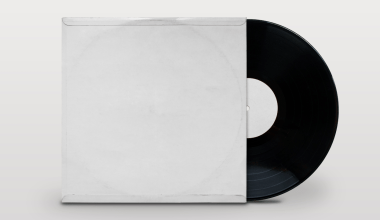The music industry has changed dramatically in the last few decades. Gone are the days when artists needed to rely solely on physical sales or major record labels to distribute their music. Today, independent musicians have the power to upload their music on all digital stores with no upfront fees and reach millions of listeners worldwide. But why is this so important?
Uploading your music to platforms like Spotify, Apple Music, and Amazon Music allows you to connect with fans wherever they are. These digital stores have become the go-to places for music lovers. By making your songs available, you increase your chances of building a loyal fan base, earning royalties, and even landing playlist placements. Plus, the process has become easier than ever, with several platforms offering services that don’t require you to pay upfront fees. This means you can focus on creating music while still achieving global reach.
What Does “No Upfront Fees” Really Mean?
If you’re new to the concept, you might be wondering what “no upfront fees” entails. Simply put, this means you can upload your music to digital stores without paying anything in advance. Platforms offering this model typically make their money through a percentage of your earnings once your music starts generating revenue.
This approach is perfect for independent artists who may not have the budget to invest in traditional distribution methods. It’s also a low-risk option because you only share your revenue after you’ve earned it. For musicians just starting out, this removes a significant financial barrier, allowing you to test the waters and gauge audience reactions without worrying about costs.
How to Get Started with Digital Distribution
Getting your music onto digital stores is simpler than you might think. Here’s a step-by-step guide to help you begin:
1. Prepare Your Music and Artwork
Before you upload, ensure your music is professionally recorded, mixed, and mastered. This is crucial because digital stores have quality standards, and you want to make a great first impression. Additionally, prepare eye-catching artwork for your album or single. Many platforms require a specific resolution and format, so check their guidelines in advance.
2. Choose the Right Distribution Platform
Not all distribution services are created equal. Some platforms charge upfront fees, while others operate on a commission basis. For no upfront fees, look for trusted names like DistroKid, Amuse, or Soundrop. These platforms make it easy to upload your music and manage royalties without hidden costs.
3. Upload Your Music
Once you’ve chosen a platform, the next step is to upload your tracks and artwork. Fill out all the necessary metadata, including song titles, artist name, and genre. Metadata is essential for ensuring your music appears in relevant searches and playlists.
4. Select the Stores and Release Date
Most platforms allow you to choose which digital stores to distribute to. It’s a good idea to select as many as possible to maximize your reach. Also, plan your release date strategically. Giving yourself a few weeks before the release date allows time for promotion and playlist consideration.
Benefits of Using a No Upfront Fee Model
Opting for a no upfront fee model offers several advantages. Here are some of the key benefits:
- Accessibility for All Artists: Whether you’re an established musician or just starting, this model makes digital distribution accessible to everyone.
- Risk-Free Entry: Since you’re not paying upfront, you have nothing to lose. This is especially helpful for independent artists testing their audience’s response.
- Global Reach: By uploading your music to digital stores, you gain access to listeners worldwide. This can lead to increased streams, royalties, and fan engagement.
- Focus on Creativity: Without worrying about distribution costs, you can dedicate more time and resources to creating music.
Promoting Your Music After Uploading
Uploading your music is only the first step. To make the most of digital distribution, you’ll need to promote your tracks effectively. Here are some tips to help you stand out:
Platforms like Instagram, TikTok, and Twitter are excellent for connecting with fans and sharing your music. Create engaging content, such as behind-the-scenes videos, live performances, or song snippets, to generate buzz.
Pitch to Playlists
Playlists are a significant driver of streams on platforms like Spotify and Apple Music. Many distribution platforms have tools to help you pitch your songs to curators. Focus on smaller, niche playlists to increase your chances of getting featured.
Collaborate with Other Artists
Collaborations can expose your music to new audiences. Partner with other artists in your genre for remixes, features, or joint promotions.
Engage with Your Fans
Responding to comments, hosting live Q&A sessions, or even giving shout-outs to your listeners can go a long way in building a loyal fan base. Fans who feel connected to you are more likely to share your music with others.
Understanding Royalties and Payments
When your music starts gaining traction, you’ll begin earning royalties. Here’s what you need to know:
Types of Royalties
- Streaming Royalties: Earned from plays on platforms like Spotify and Apple Music.
- Download Royalties: Earned when fans purchase your music on stores like iTunes.
- Performance Royalties: Generated when your music is played on the radio or in public venues.
Payment Cycles
Most distribution platforms pay artists monthly or quarterly. Keep track of your streams and earnings through the dashboard provided by your distributor. This helps you understand which tracks are performing well and where your audience is located.
Common Challenges and How to Overcome Them
While uploading your music to digital stores with no upfront fees is straightforward, you may encounter some challenges. Here’s how to tackle them:
Limited Promotion Resources
Solution: Focus on organic growth through social media and collaborations. Use free tools like Canva to create promotional materials.
Competing with Established Artists
Solution: Find your niche and target specific audiences. Engaging with smaller, loyal communities can often be more rewarding than chasing mass appeal.
Understanding Analytics
Solution: Take time to learn how to read your streaming and royalty data. Many platforms offer tutorials to help you make sense of your metrics.
Conclusion
The ability to upload your music on all digital stores with no upfront fees has revolutionized the music industry. It’s never been easier for independent artists to share their creations with the world and earn from their passion. By following the steps outlined in this guide, you can take full advantage of digital distribution and set yourself up for long-term success. So, don’t wait—start your journey today and let your music be heard globally.
Related Articles:
For further reading, explore these related articles:
- How to Promote Your Remix on iTunes Globally: Tips for Success
- How to Promote Your Remix on iTunes in India
For additional resources on music marketing and distribution, visit DMT RECORDS PRIVATE LIMITED.






